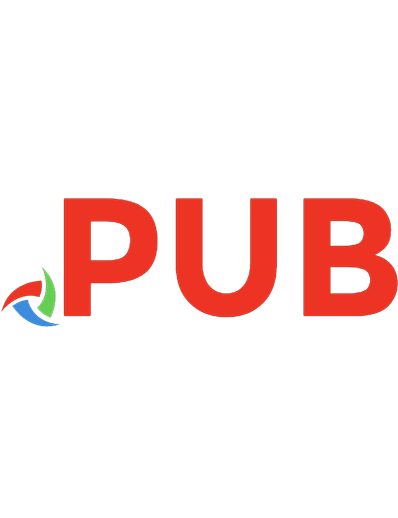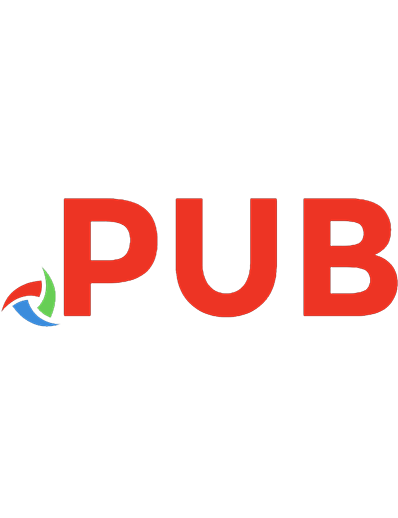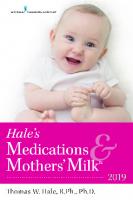Hale’s Medications & Mothers’ Milk(tm) 2019 0826135587, 9780826135582
Praise for Earlier Editions: "[This] is our gold standard." --Sandra J. Cole, RNC, IBCLC Sharp Mary Birch H
982 87 7MB
English Pages 928 [891] Year 2018
Polecaj historie
Citation preview
Hale’s Medications & Mothers’ Milk™
2019
A Manual of Lactational Pharmacology
Hale’s Medications & Mothers’ Milk™
2019
A Manual of Lactational Pharmacology Eighteenth Edition
Thomas W. Hale, R.Ph., Ph.D. Professor Department of Pediatrics Texas Tech University School of Medicine Amarillo, Texas
Copyright © 2019 Springer Publishing Company, LLC All rights reserved. No part of this publication may be reproduced, stored in a retrieval system, or transmitted in any form or by any means, electronic, mechanical, photocopying, recording, or otherwise, without the prior permission of Springer Publishing Company, LLC, or authorization through payment of the appropriate fees to the Copyright Clearance Center, Inc., 222 Rosewood Drive, Danvers, MA 01923, 978-750-8400, fax 978-646-8600, [email protected] or on the Web at www.copyright. com. Springer Publishing Company, LLC 11 West 42nd Street New York, NY 10036 www.springerpub.com Acquisitions Editor: Elizabeth Nieginski Compositor: Exeter Premedia Services Private Ltd. The author gratefully acknowledges Lily Sophia, LLC, for the cover photograph ISBN: 9780826135582 ebook ISBN: 9780826135629 18 19 20 21 22 / 5 4 3 2 1 The author and the publisher of this Work have made every effort to use sources believed to be reliable to provide information that is accurate and compatible with the standards generally accepted at the time of publication. Because medical science is continually advancing, our knowledge base continues to expand. Therefore, as new information becomes available, changes in procedures become necessary. We recommend that the reader always consult current research and specific institutional policies before performing any clinical procedure. The author and publisher shall not be liable for any special, consequential, or exemplary damages resulting, in whole or in part, from the readers’ use of, or reliance on, the information contained in this book. The publisher has no responsibility for the persistence or accuracy of URLs for external or third-party Internet websites referred to in this publication and does not guarantee that any content on such websites is, or will remain, accurate or appropriate.
Contact us to receive discount rates on bulk purchases. We can also customize our books to meet your needs. For more information please contact: [email protected]
Printed in the United States of America.
CHANGES IN THIS EDITION The 2019 edition has many significant updates including the addition of 39 new drugs, and updating of more than 331 current drugs. Each year there are so many new FDA-approved medications that it is difficult to choose which to add. As usual, I chose those that a breastfeeding mother would most likely use. Key changes in 2019 include: •
My laboratories have been publishing many new breastfeeding drug studies, and I have tried to add as many of these as possible.
•
I have added new infectious diseases and updated the old ones with current information.
•
I’ve added dozens of new drugs, even though we don’t know if and how much they transfer into human milk.
•
As before, with a few exceptions, I have removed the combination drugs (those with 2-4 drugs) and added them to a table in the Appendix. From this table you can look up the individual drugs.
Lastly, I would like to thank my InfantRisk Center staff for helping me decide which drugs are really popular, and make sure they were included in this edition. Each year 12,000 mothers call our service and I use these data to prepare this book.
Tom
PREFACE We all agree that human milk is best for human infants. The benefits are simply enormous and supported by a world of good literature. However, the use of medications in breastfeeding mothers is often controversial, particularly with clinicians unexposed to this literature. This resource is dedicated to reducing some of these misconceptions. The truth is, most drugs simply don’t enter milk in levels that are hazardous to a breastfed infant. The problem, however, is devining which drugs are safe and which are hazardous. Because so few clinicians understand lactational pharmacology, the number of women who are advised to discontinue breastfeeding in order to take a medication is still far too high. Fortunately, many mothers are now becoming aware of the enormous benefits of breastfeeding and simply refuse to follow some of the advice given by their healthcare professionals. They seek out the information on their own and invariably find this resource or my websites. Because so many women ingest medications during the early neonatal period, it is not surprising that one of the most common questions encountered in pediatrics concerns the use of various drugs in a breastfeeding mother. Unfortunately, most healthcare professionals simply review the package insert or advise the mother not to breastfeed without having done a thorough study of the literature to find the true answer. Discontinuing breastfeeding is often the wrong decision, and most mothers could easily continue to breastfeed and take the medication without risk to the infant. Even the FDA has recognized this and now recommends drug manufacturers carry out studies to determine milk levels of their drug. It is generally accepted that all medications transfer into human milk to some degree, although it is almost always quite low. Only rarely does the amount transferred into milk produce clinically relevant doses in the infant. Ultimately, it is the clinician’s responsibility to review the research I have on the drugs in this resource and make a clear decision as to whether the mother should continue to breastfeed.
Drugs may transfer into human milk if they: Attain high concentrations in maternal plasma Are low in molecular weight (5%. Protein binding also plays an important role. Drugs circulate in the maternal plasma, either bound to albumin or freely soluble in the plasma. It is the free component (unbound fraction) that transfers into milk, while the bound fraction stays in the maternal circulation. Therefore, drugs that have high maternal protein binding (warfarin, many NSAIDs) have reduced milk levels simply because they are excluded from the milk compartment. Once a drug has entered the mother’s milk and has been ingested by the infant, it must traverse through the infant’s gastrointestinal (GI) tract prior to absorption. Some drugs are poorly stable in this environment due to the proteolytic enzymes and acids present in the infant’s
PREFACE ix
stomach. This includes the aminoglycoside family, omeprazole, and large peptide drugs, such as heparin. Other drugs are poorly absorbed by the infant’s GI tract and do not enter the infant’s bloodstream. Thus, oral bioavailability is a useful tool to estimate just how much of the drug will be absorbed by the infant. Many drugs are sequestered in the liver (first pass) and may never actually reach the plasma compartment where they are active. Absorption characteristics such as these ultimately tend to reduce the overall effect of many drugs in breastfed infants. There are certainly exceptions to this rule, and one must always be aware that the action of a drug in the GI tract can be profound, producing diarrhea, constipation, and occasionally syndromes such as pseudomembranous colitis. One of the more popular methods for estimating risk is to determine the Relative Infant Dose (RID). The RID is calculated by dividing the infant’s dose via milk (mg/ kg/day) by the mother’s dose in mg/kg/day. The RID gives the clinician a feeling for just how much medication the infant is exposed to on a weight-normalized basis. However, many authors calculate the infant dose without normalizing for maternal and infant weight, so be cautious. mg
kg
Dose in infant
d
RID = mg Dose in mother
kg
d
Key Points About Breastfeeding and Medications •
Avoid using medications that are not necessary. Herbal drugs, high-dose vitamins, unusual supplements, iodine supplements, etc. that are simply not necessary should be avoided.
•
If the RID is less than 10%, most medications are considered relatively safe to use, but again this is dependent on the type of drug taken.
•
Choose drugs for which we have published data, rather than those recently introduced.
•
Evaluate the infant for risks. Be more cautious with premature infants or neonates.
•
Medications used in the first 3 to 4 days generally produce subclinical levels in the infant due to the limited volume of milk.
•
Recommend that mothers with symptoms of depression or other mental disorders seek treatment. Most of the medications used to treat these syndromes are safe. Remember, healthy moms make healthy babies.
•
Most drugs are quite safe in breastfeeding mothers. The hazards of using formula are well known and documented.
•
With some medications, discontinuing breastfeeding for some hours/days may be required, particularly with radioactive compounds and anticancer drugs. If the drug is hazardous to you, it is probably hazardous to your infant.
•
Choose drugs with short half-lives, high protein binding, low oral bioavailability, or high molecular weight.
Lastly, it is terribly important to always evaluate the infant’s ability to handle small amounts of medications. Some infants, such as premature or unstable infants, may not be suitable candidates
x
PREFACE
for certain medications. But remember that early postpartum (and in late-stage lactation), the amount of milk produced (30-100 mL/day) is so low that the clinical dose of drug transferred is often low, so even premature neonates would receive only a limited amount from the milk.
Evaluation of the Infant •
Inquire about the infant—always inquire as to the infant’s age, size, and stability. These are perhaps the most important criteria to be evaluated prior to using the medication.
•
Infant age—premature and newborn infants are at somewhat greater risk. Older infants are at somewhat lower risk due to high metabolic capacity.
•
Infant stability—unstable infants with poor GI stability may be at increased risk from certain medications.
•
Pediatric approved drugs—generally they are less hazardous if long-term history of safety is recognized.
•
Dose vs. age—the age of an infant is critical. Use medications cautiously in premature infants. Older, mature infants can metabolize and clear medications much more easily. Remember the dose of the drug is dependent on milk supply. In mothers in late-stage lactation ( >1 year), milk production is often low, so the dose of drug delivered is lower.
•
Drugs that alter milk production—avoid medications that may alter the mother’s milk production. These include estrogens, ergot alkaloids, and other drugs.
General Suggestions for the Clinician Determine if the drug is absorbed from the GI tract. Many drugs, such as the aminoglycosides, vancomycin, cephalosporin antibiotics (third generation), magnesium salts, and large protein drugs (heparin), are so poorly absorbed that it is unlikely the infant will absorb significant quantities. At the same time, observe for GI side effects from the medication trapped in the GI compartment of the infant (e.g., diarrhea). Calculate and review the RID and compare that to the pediatric dose if known. Most older RIDs were derived using the Cmax (highest milk concentration of the drug) that was published. In current research projects, I always calculate the average (Cave) milk level throughout the dosing schedule. This estimate provides an average exposure rather than just the highest. I no longer use the milk/plasma ratio as it is virtually worthless unless you know the maternal plasma level. It does not provide the clinician with information as to the average amount of drug transferred to the infant via milk. Even if the drug has a high milk/plasma ratio, if the maternal plasma level of the medication is very small (such as with ranitidine), then the absolute amount (dose) of a drug delivered to the infant will still be quite small and often subclinical. Be cautious of drugs (or their active metabolites) that have long pediatric half-lives as they can continually build up in the infant’s plasma over time. The barbiturates, benzodiazepines, and meperidine are classic examples where higher levels in the infant can and do occasionally occur. If you are provided a choice, choose drugs that have higher protein binding because they are generally sequestered in the maternal circulation and do not transfer readily into the milk compartment or the infant. Remember, it’s the free drug that transfers into the milk compartment. Without doubt, the most important parameter that determines drug penetration into milk is plasma protein binding. Choose drugs with high protein binding. Although not always true, I have generally found centrally active drugs (anticonvulsants, antidepressants, antipsychotics) frequently penetrate milk in higher (not necessarily “high”) levels simply due to their physicochemistry. If the drug in question produces sedation, depression, or
PREFACE xi
other neuroleptic effects in the mother, it is likely to penetrate the milk and may produce similar effects in the infant. Thus, with CNS-active drugs, one should always check the data in this resource closely and monitor the infant routinely. Be cautious of herbal drugs as many contain chemical substances that may be dangerous to the infant. Numerous poisonings have been reported. Prior to using, advise the mother to contact a lactation consultant or herbalist who is knowledgeable about their use in breastfeeding mothers. Do not exceed standard recommended doses. Try to use pure forms, not large mixtures of unknown herbals. Do not overdose; use only minimal amounts. For radioactive compounds, I have gathered much of the published data in this field into several tables. The Nuclear Regulatory Commission recommendations are quite good, but they differ from some published data. They can be copied and provided to your radiologist. They are available from the Nuclear Regulatory Commission’s web page address in the appendix. Use the RID. In general, a RID of

![Hale’s Medications & Mothers’ Milk 2023: A Manual of Lactational Pharmacology [20 ed.]
0826160638, 9780826160638](https://dokumen.pub/img/200x200/hales-medications-amp-mothers-milk-2023-a-manual-of-lactational-pharmacology-20nbsped-0826160638-9780826160638-c-5147213.jpg)
![Hale’s Medications & Mothers’ Milk 2023: A Manual of Lactational Pharmacology [20 ed.]
0826160638, 9780826160638](https://dokumen.pub/img/200x200/hales-medications-amp-mothers-milk-2023-a-manual-of-lactational-pharmacology-20nbsped-0826160638-9780826160638.jpg)




![Parenteral medications [Fourth edition.]
9781498719148, 1498719147](https://dokumen.pub/img/200x200/parenteral-medications-fourth-edition-9781498719148-1498719147.jpg)

